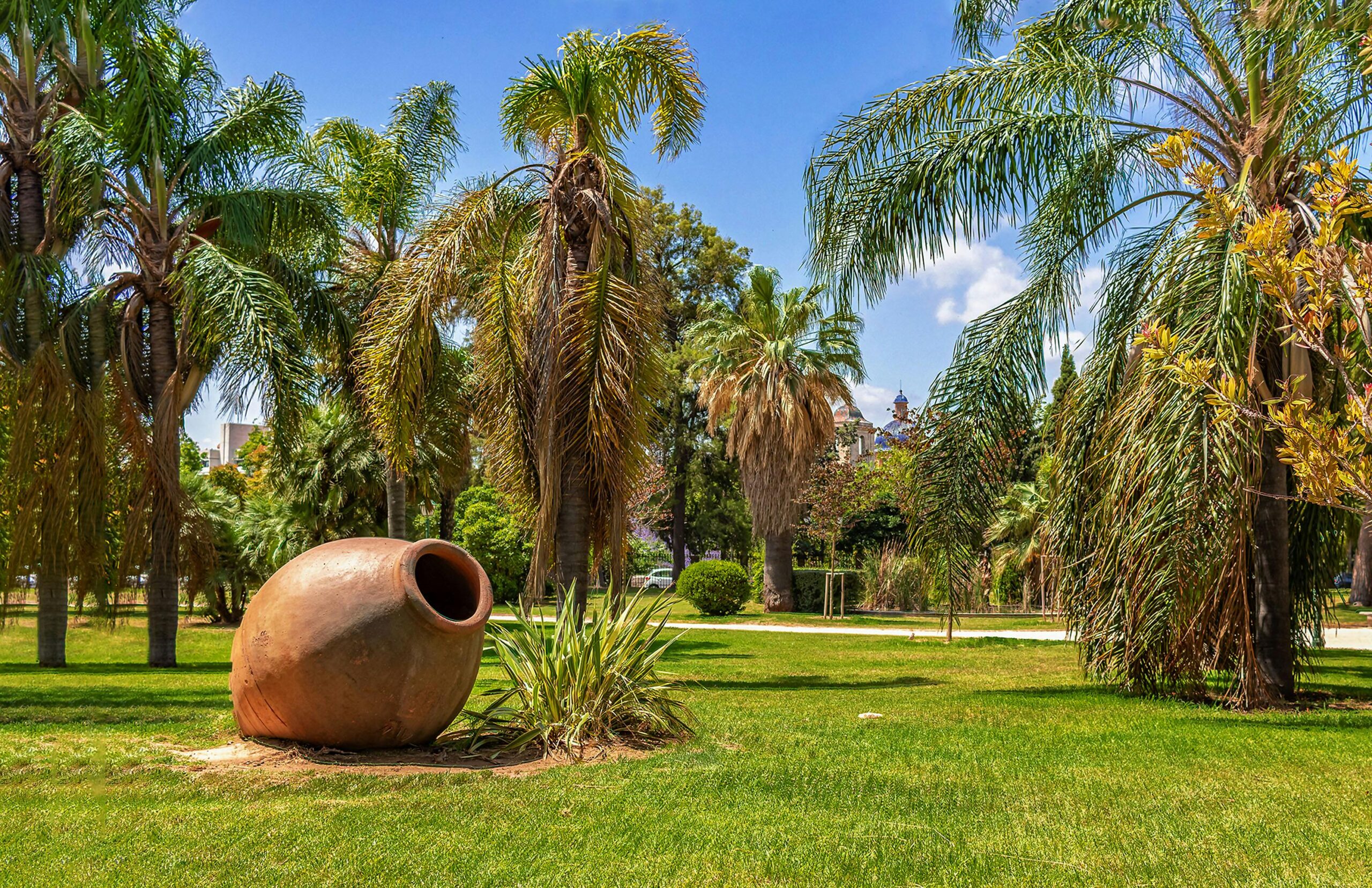
Have you ever wandered through a beautifully designed garden or park and felt a sense of peace and tranquility wash over you? That’s the magic of landscaping. Whether you have a small backyard or a sprawling estate, the art of landscaping can truly transform your outdoor space into a stunning oasis. In this article, we will delve into the world of landscaping, exploring the various techniques, design principles, and plant choices that can elevate your outdoor environment to the next level.
Throughout this comprehensive guide, you will learn how to create harmonious outdoor landscapes that not only enhance the beauty of your property but also improve the functionality and sustainability of your outdoor space. From selecting the right plants for your climate to incorporating hardscaping elements such as patios, walkways, and water features, we will cover all aspects of landscaping to help you achieve the yard of your dreams.
Whether you are a seasoned gardener looking to take your outdoor space to new heights or a novice homeowner eager to learn the basics of landscaping, this article is your go-to resource for all things related to landscaping. Get ready to roll up your sleeves, dig into the dirt, and unleash your creativity as we embark on a journey to create outdoor spaces that inspire, relax, and rejuvenate. Let’s dive into the art of landscaping and unlock the potential of your outdoor oasis.
The Importance and Benefits of Landscaping
Landscaping is not just about beautifying outdoor spaces; it plays a crucial role in enhancing the environment and improving quality of life. This article will delve into the significance of landscaping and the many benefits it offers.
Landscaping encompasses a range of activities aimed at modifying the features of a piece of land. From planting trees and flowers to constructing paths and installing outdoor structures, landscaping transforms dull and barren areas into vibrant, functional outdoor spaces that offer numerous advantages.
Importance of Landscaping:
1. Environmental Benefits: Landscaping helps in maintaining ecological balance by preserving natural habitats, reducing soil erosion, and mitigating the effects of pollution. Trees and plants act as natural air purifiers, absorbing carbon dioxide and releasing oxygen, thereby improving air quality.
2. Aesthetic Appeal: Well-designed landscapes enhance the aesthetic appeal of residential or commercial properties, creating a welcoming and visually pleasing environment. A beautifully landscaped space not only increases property value but also boosts curb appeal.
3. Psychological Well-being: Numerous studies have shown that exposure to green spaces and natural surroundings has a positive impact on mental health. Landscaped areas promote relaxation, reduce stress levels, and improve overall well-being.
4. Economic Benefits: Landscaping can result in significant cost savings by providing natural insulation, reducing energy consumption, and increasing property value. Well-maintained landscapes attract potential buyers and tenants, leading to higher resale or rental prices.
Example of Success: The transformation of a barren backyard into a lush garden oasis illustrates the power of landscaping. Through strategic planning, selection of appropriate plant species, and efficient irrigation techniques, the once desolate space was turned into a thriving ecosystem teeming with biodiversity. Not only did the garden enhance the visual appeal of the property, but it also became a sanctuary for the homeowners, providing a peaceful retreat amidst the hustle and bustle of urban life.
In conclusion, landscaping is not just about creating pretty gardens; it is a multifaceted practice with far-reaching benefits for individuals, communities, and the environment. By understanding the importance of landscaping and embracing its potential, we can create sustainable and visually appealing outdoor spaces that enrich our lives.
How to apply landscaping step by step
When it comes to landscaping, implementing the right techniques is essential to achieve a beautiful and functional outdoor space. In this guide, we will walk you through a step-by-step process on how to apply landscaping effectively.
1. Assess your outdoor space: Before starting any landscaping project, take the time to assess your outdoor space. Consider factors such as the size of the area, existing features, sunlight exposure, soil quality, and any specific needs or preferences you have. This will help you better understand the layout and potential of your space.
2. Create a landscaping plan: Once you have assessed your outdoor space, it’s time to create a landscaping plan. Start by determining your goals and priorities for the space. Do you want a cozy entertainment area, a vibrant garden, or a relaxing retreat? Create a rough sketch or use landscaping software to visualize your ideas. Include elements such as plants, hardscaping, lighting, and any other features you want to incorporate.
3. Choose the right plants and materials: Selecting the right plants and materials is crucial for a successful landscaping project. Consider factors such as the climate, soil type, sunlight exposure, and maintenance requirements when choosing plants. Opt for a mix of trees, shrubs, flowers, and grasses to create a balanced and diverse landscape. When it comes to materials, choose high-quality options that complement the overall aesthetic and function of your space.
4. Implement your landscaping plan: With your plan in place and materials ready, it’s time to start implementing your landscaping design. Begin by preparing the soil, installing any hardscaping elements such as pathways or patios, and planting your chosen vegetation. Pay attention to spacing, arrangement, and proper planting techniques to ensure the long-term health and growth of your plants.
5. Maintain and fine-tune your landscape: Once your landscaping project is complete, the work doesn’t stop there. Regular maintenance is essential to keep your outdoor space looking its best. Establish a watering schedule, weed regularly, prune plants as needed, and update or add new elements to enhance the overall look of your landscape. Regularly assess your outdoor space to identify any areas that may need adjustment or improvement.
By following these steps and investing time and effort into your landscaping project, you can create a stunning outdoor space that reflects your style and enhances your home’s curb appeal. Remember to adapt the tips and techniques to suit your specific needs and preferences for a truly personalized landscape.

Tips on Landscaping:
✅ Choose native plants: Native plants are well-adapted to the local environment, requiring less water and maintenance.
❌ Avoid overcrowding: Planting too many plants close together can hinder their growth and overall look of the landscape.
💡 Extra tip: Consider the seasons when planning your landscaping design to ensure year-round beauty in your outdoor space.’), type=’text’)
Key Concepts in Landscaping
Landscaping is an art form that involves transforming outdoor spaces into beautiful and functional areas. To truly understand the world of landscaping, it’s essential to grasp key concepts that underpin this practice. Let’s delve into some fundamental concepts that define the art and science of landscaping.
1. Unity in Diversity: In landscaping, unity refers to the cohesive design that ties all elements of the outdoor space together. It involves creating a sense of harmony and continuity in the overall design. Diversity, on the other hand, refers to the variety of plants, materials, and features used in the landscape. The interplay between unity and diversity is what creates a visually appealing and balanced outdoor environment.
2. Balance: Balance is crucial in landscaping as it helps create visual stability and harmony. There are two types of balance in landscaping: symmetrical and asymmetrical. Symmetrical balance involves mirroring elements on either side of a central axis, while asymmetrical balance is achieved through the careful arrangement of different elements to create equilibrium.
3. Scale and Proportion: Scale refers to the size of elements in relation to each other and the surrounding space. Proportion, on the other hand, deals with the relationship between these elements. Properly understanding and implementing scale and proportion is essential for creating a well-balanced and visually pleasing landscape.
4. Line and Form: Lines are essential in landscaping as they help guide the eye and create movement in the design. Different types of lines, such as straight, curved, or diagonal, can evoke different feelings and moods in the landscape. Form, on the other hand, refers to the shape and structure of elements in the outdoor space. By playing with lines and forms, landscapers can create dynamic and visually interesting designs.
5. Texture and Color: Texture and color play a significant role in landscaping design. Texture refers to the surface quality of elements in the landscape, whether smooth, rough, or coarse. Incorporating a variety of textures adds depth and visual interest to the design. Color, on the other hand, can evoke different emotions and set the tone for the outdoor space. Understanding how to use texture and color effectively can transform a landscape into a work of art.
6. Functionality: While aesthetics are essential in landscaping, functionality is equally important. A well-designed landscape not only looks beautiful but also serves a practical purpose. Elements such as pathways, seating areas, and lighting should be carefully integrated into the design to ensure that the outdoor space is both visually appealing and functional.
By grasping these key concepts in landscaping, you can gain a deeper appreciation for the art and science behind creating stunning outdoor environments. Whether you’re a novice gardener or a seasoned landscaper, understanding these fundamental principles will help you design landscapes that are not only visually captivating but also functional and harmonious.
Frequently Asked Questions (FAQs) About Landscaping
❓ What is landscaping? Landscaping refers to the process of modifying the visible features of a piece of land, including living elements like flora or fauna, as well as natural elements like terrain shape or bodies of water, to enhance the area’s aesthetic appeal.
❓ How can landscaping benefit my property? Landscaping can significantly increase the value of your property by improving its curb appeal. A well-designed landscape can also create a more enjoyable outdoor living space for you and your family to relax in.
❓ What are some key elements of landscaping? Key elements of landscaping include plant selection, hardscaping features like pathways and walls, lawn care, irrigation systems, and outdoor lighting. These elements work together to create a harmonious and visually pleasing outdoor environment.
❓ Do I need professional help for landscaping projects? While some landscaping projects can be DIY, complex designs or significant transformations are best handled by professional landscapers. They have the expertise to create designs that suit your property and the skills to execute them effectively.
❓ How can I maintain my landscape after it’s been designed and installed? Regular maintenance is crucial to keep your landscape looking its best. This includes tasks like mowing the lawn, pruning plants, fertilizing, weeding, and seasonal clean-ups. Hiring a landscaping maintenance service can help you keep your landscape in top condition.
